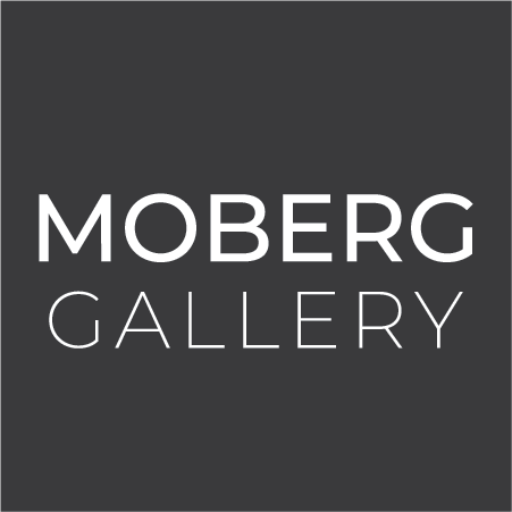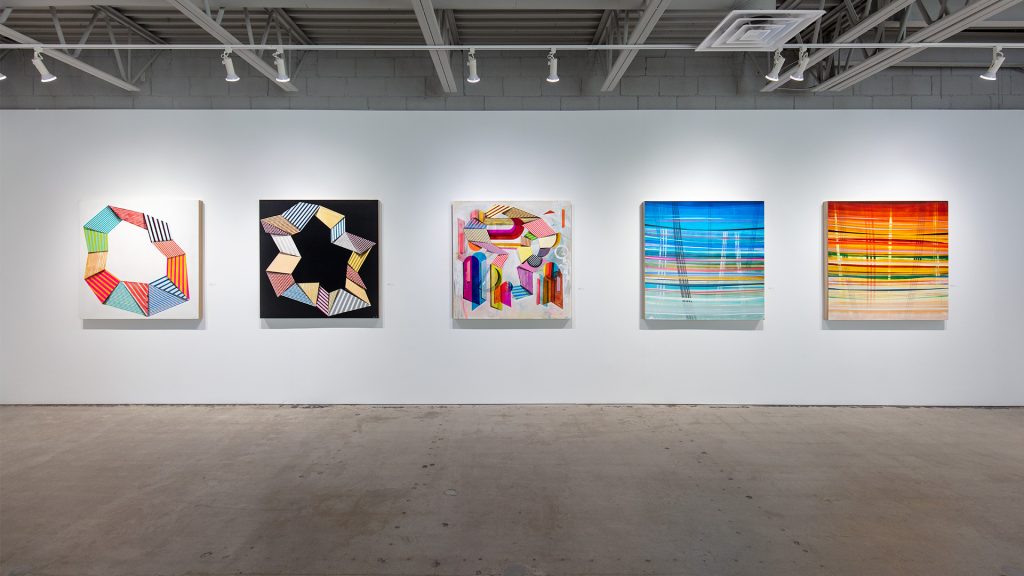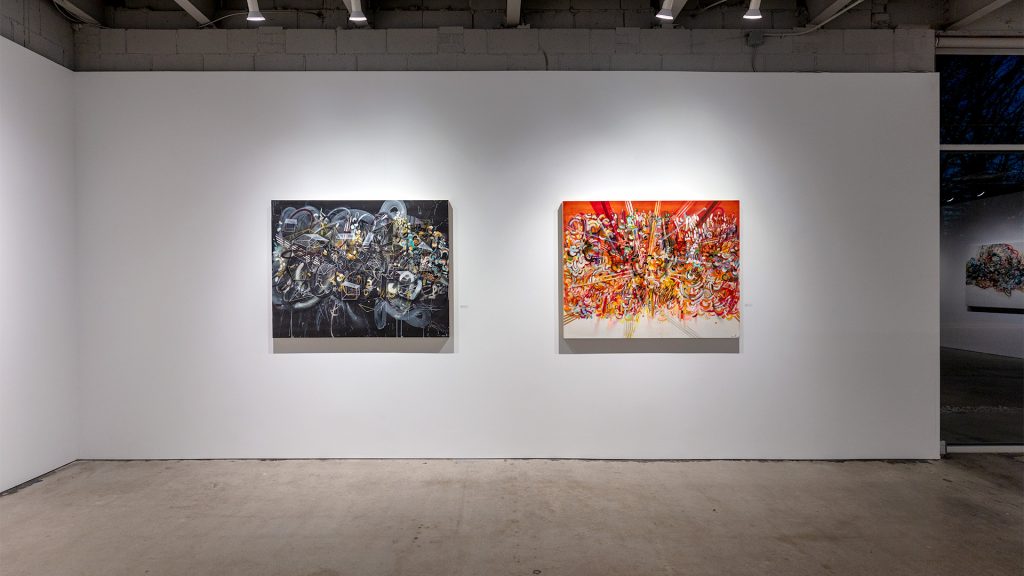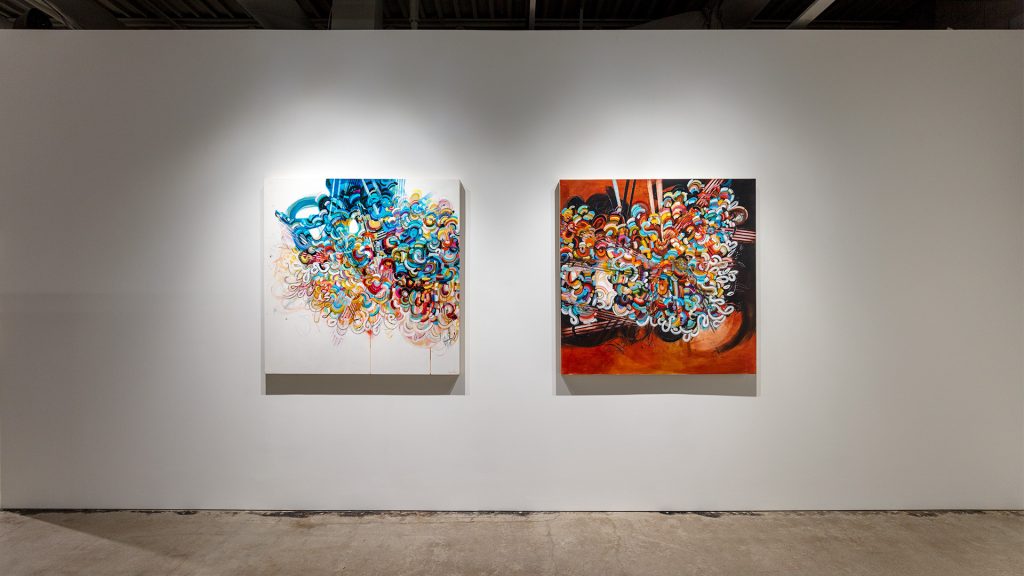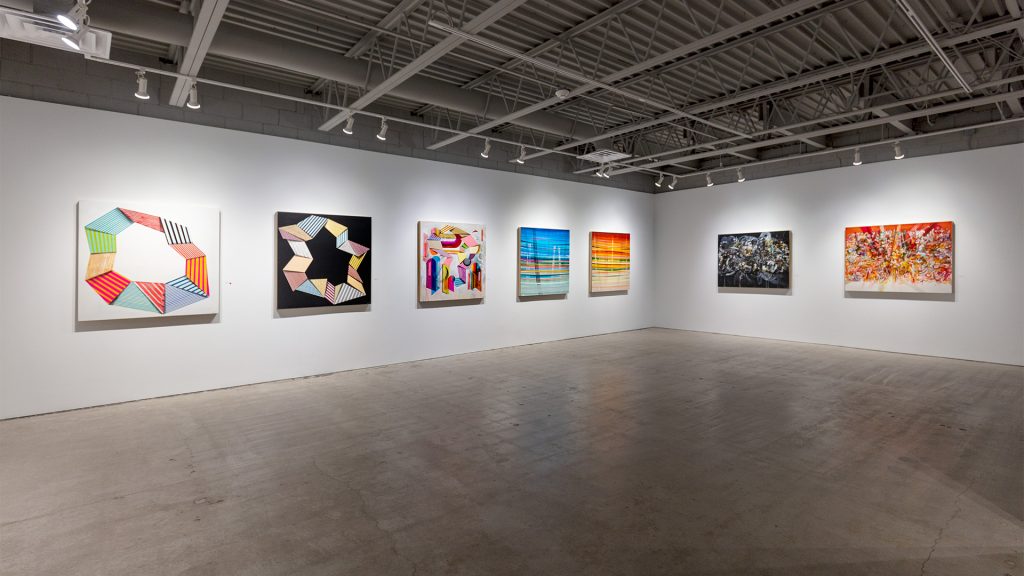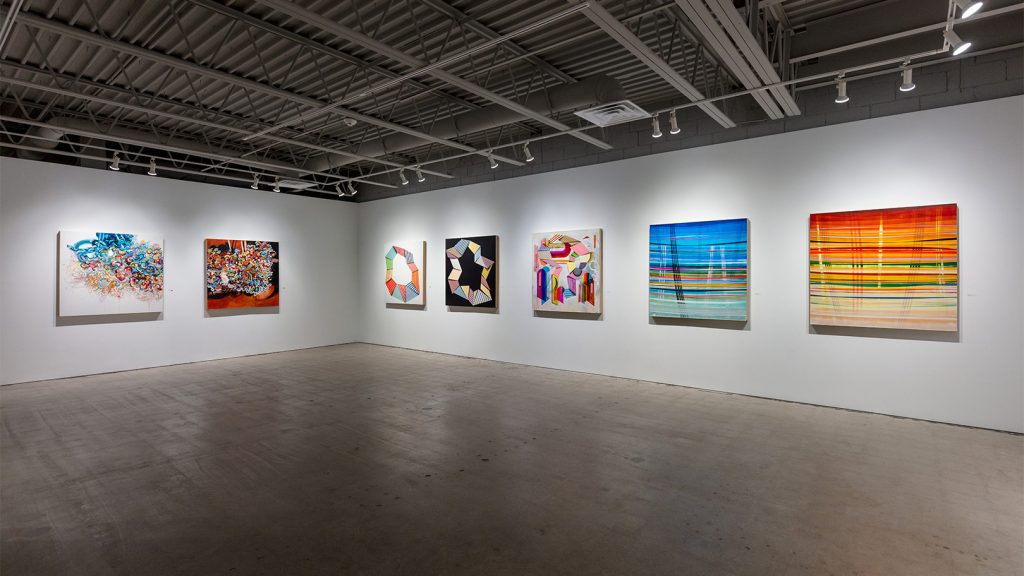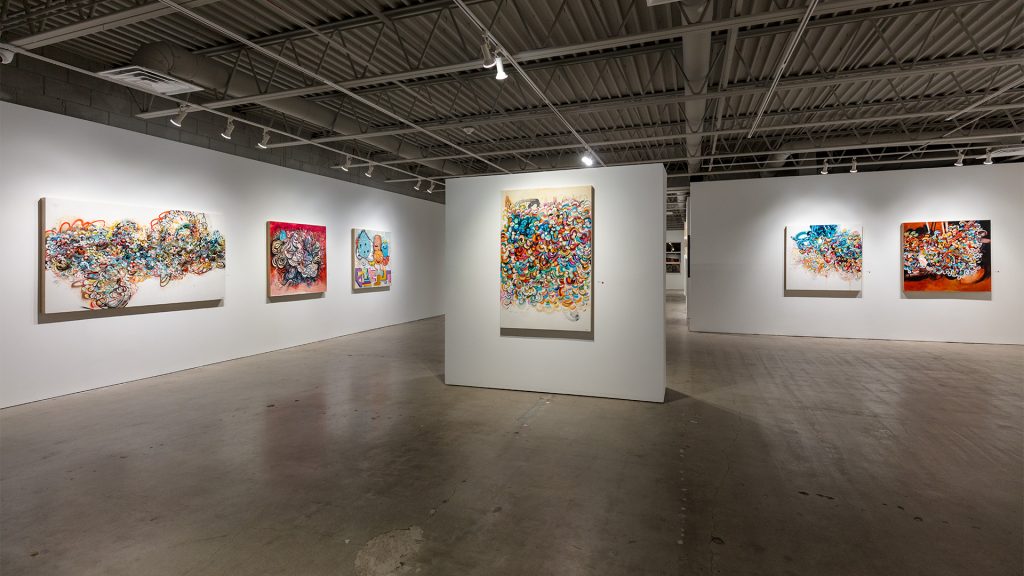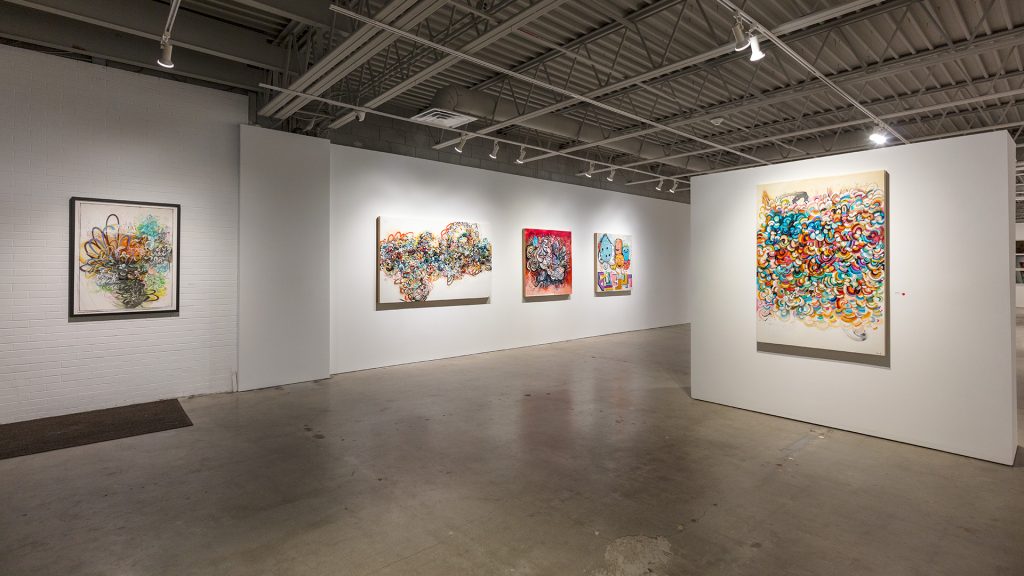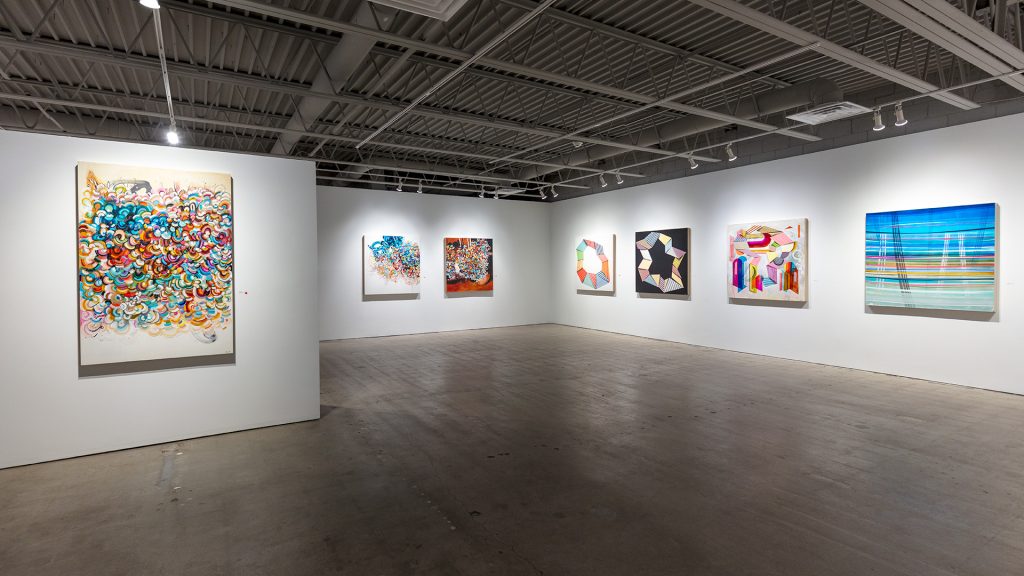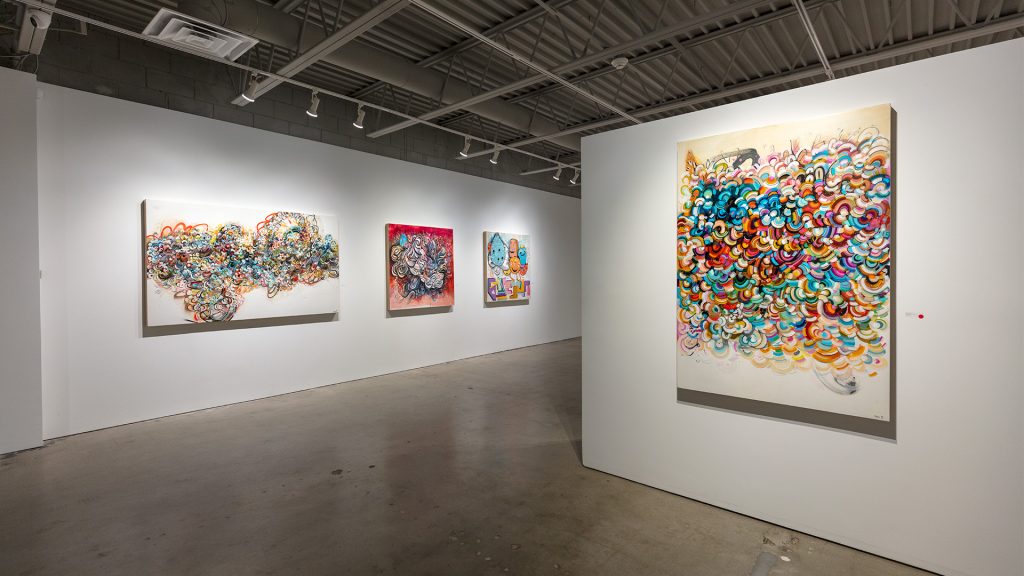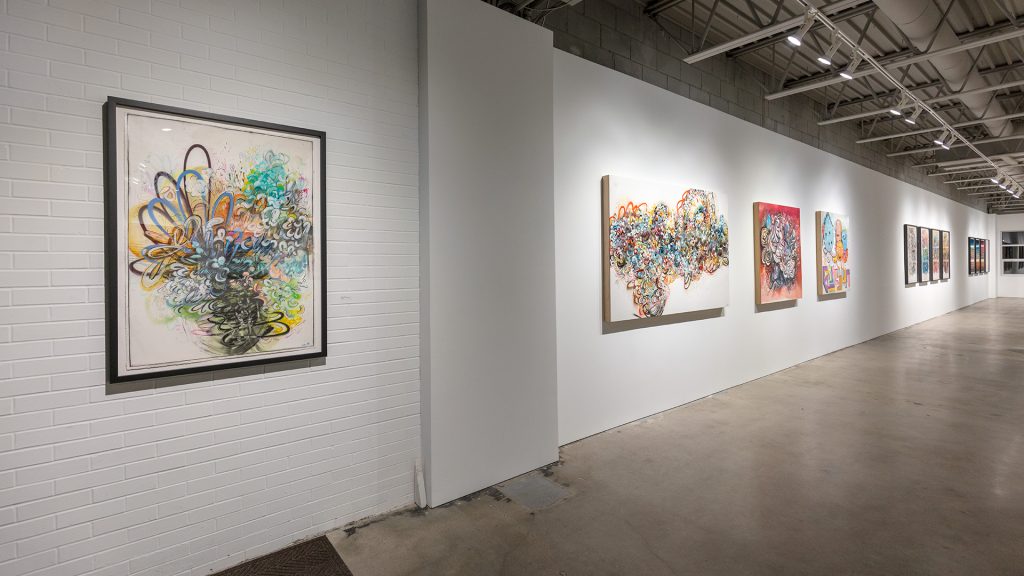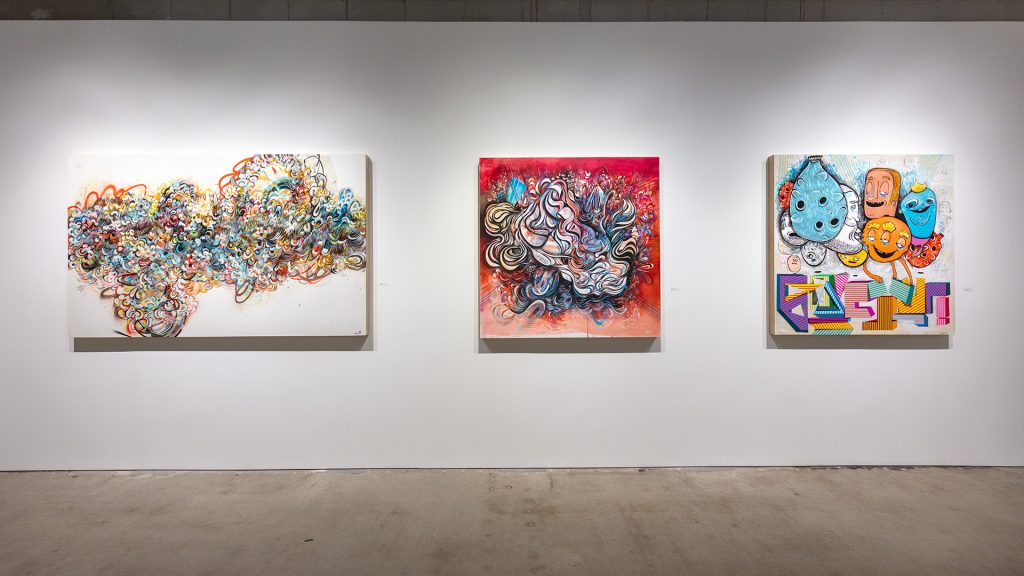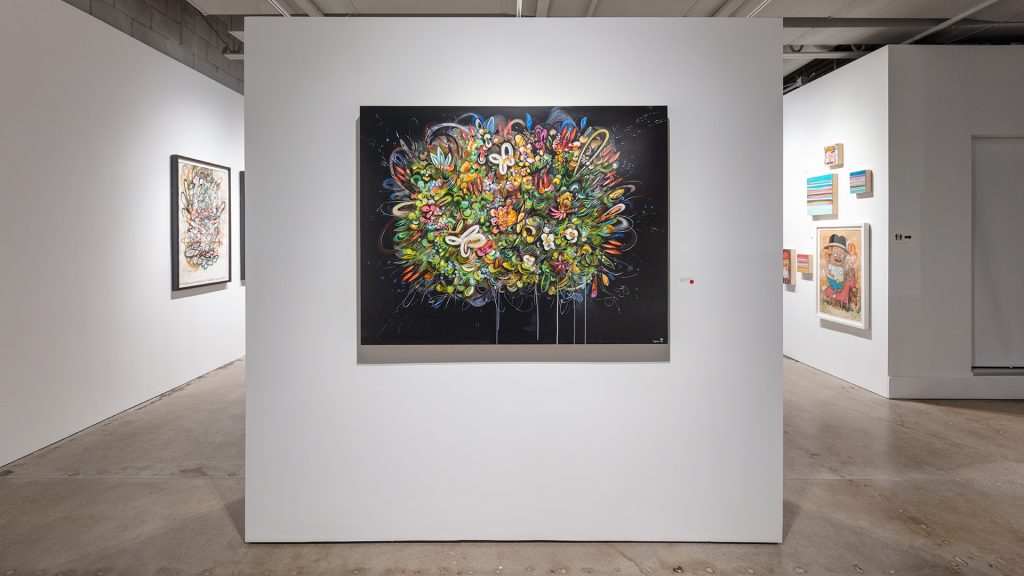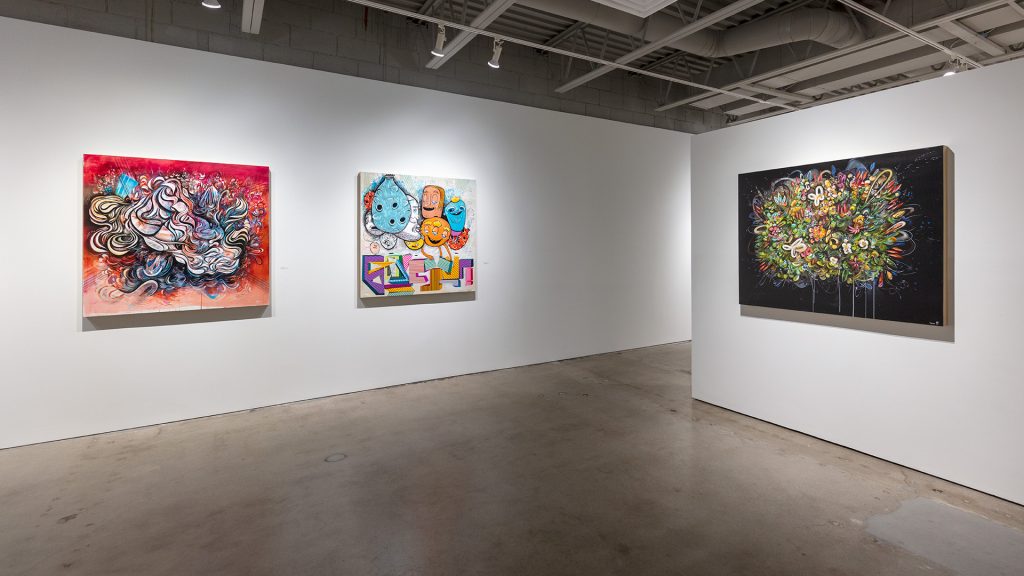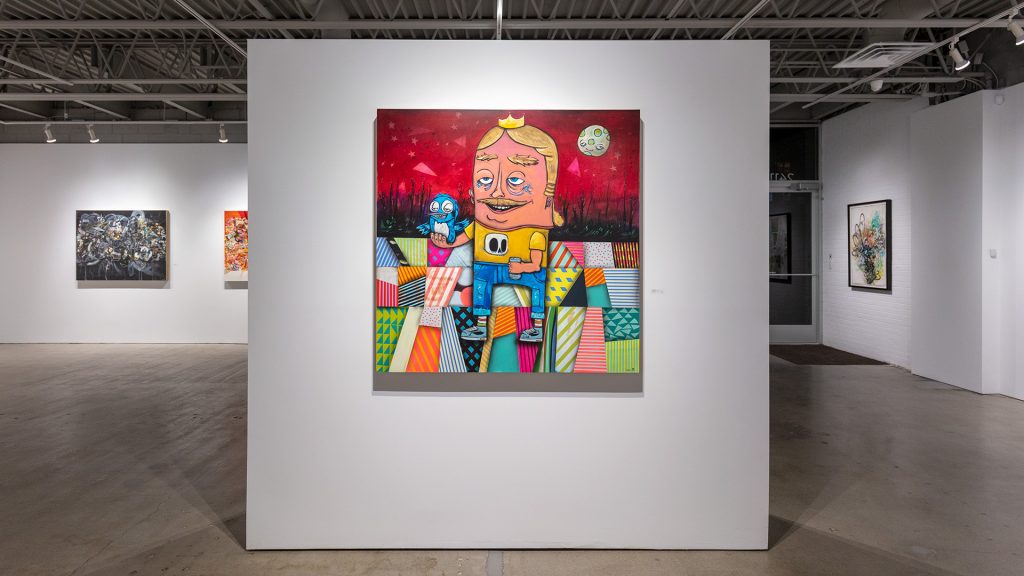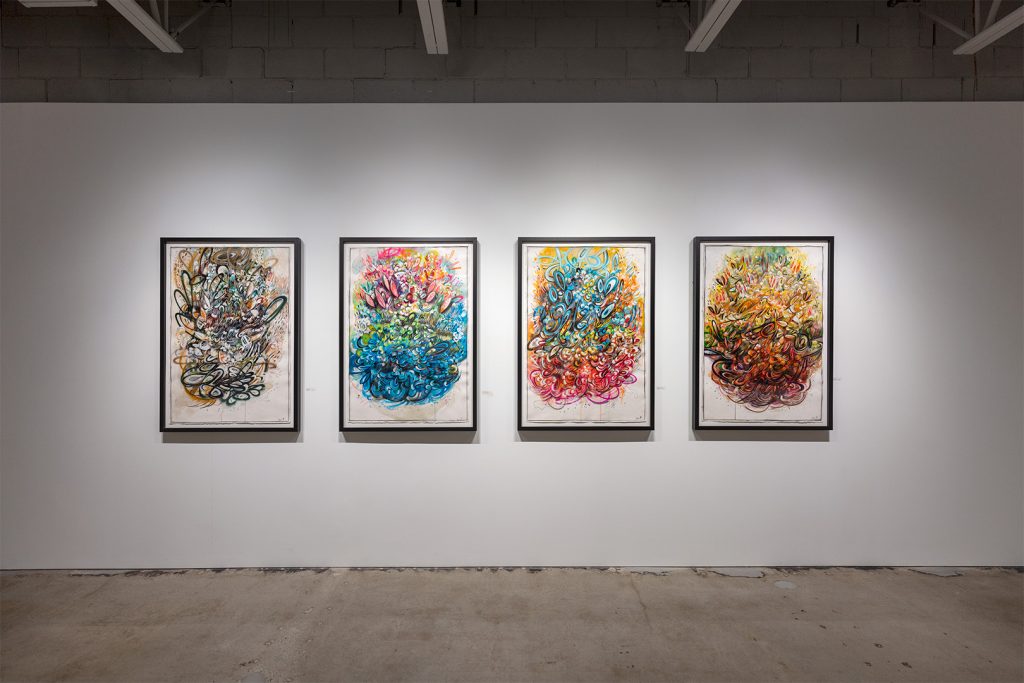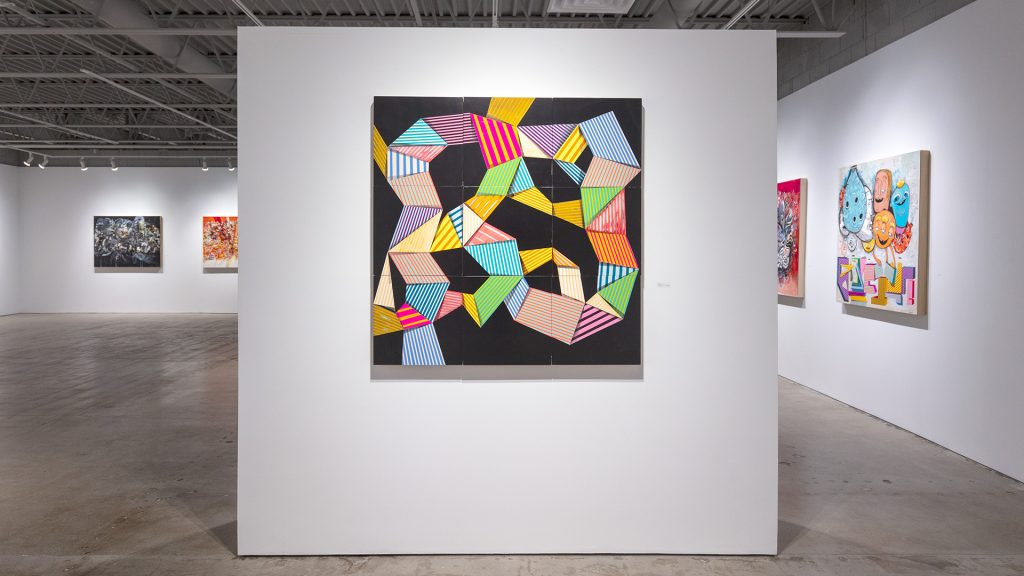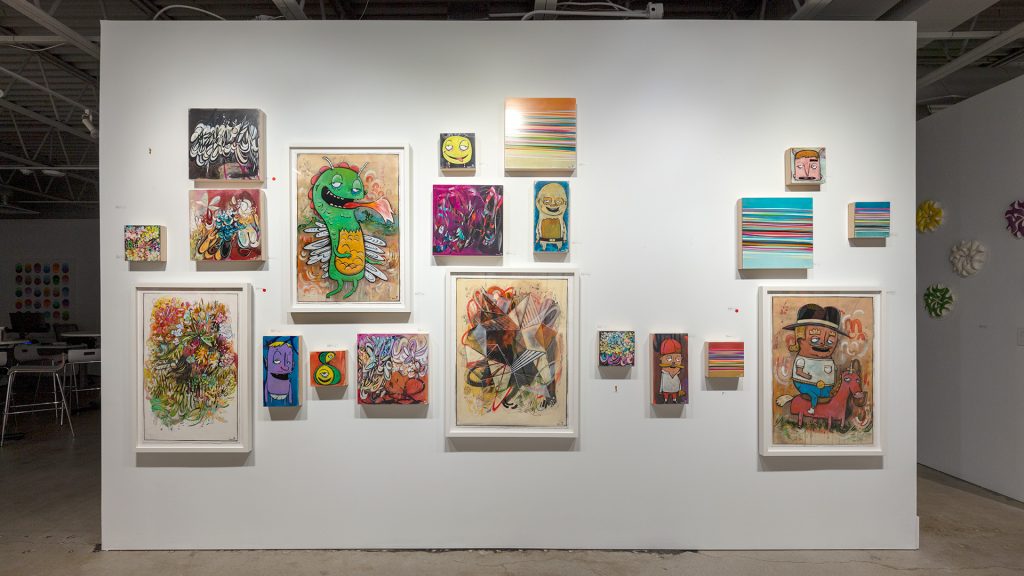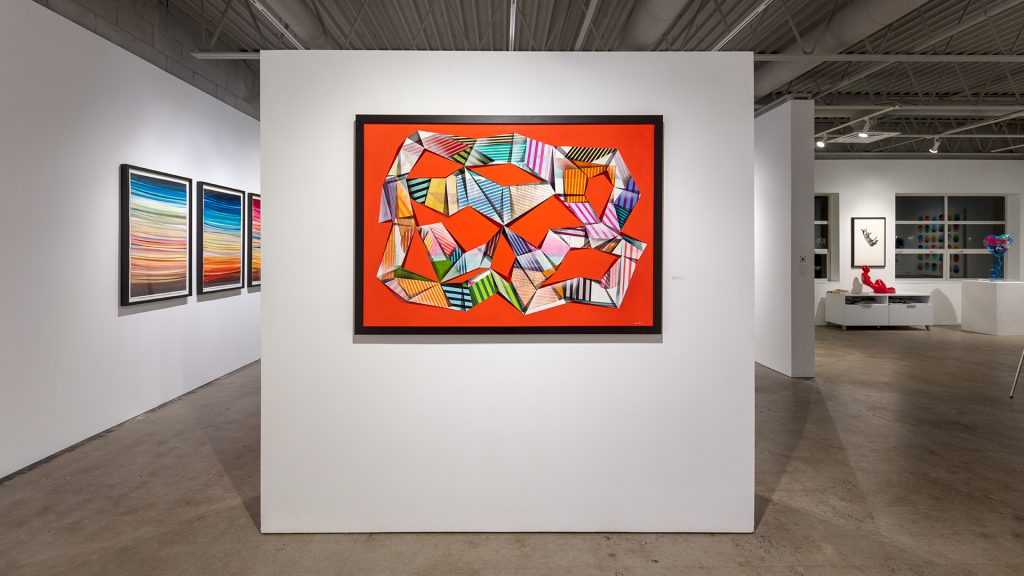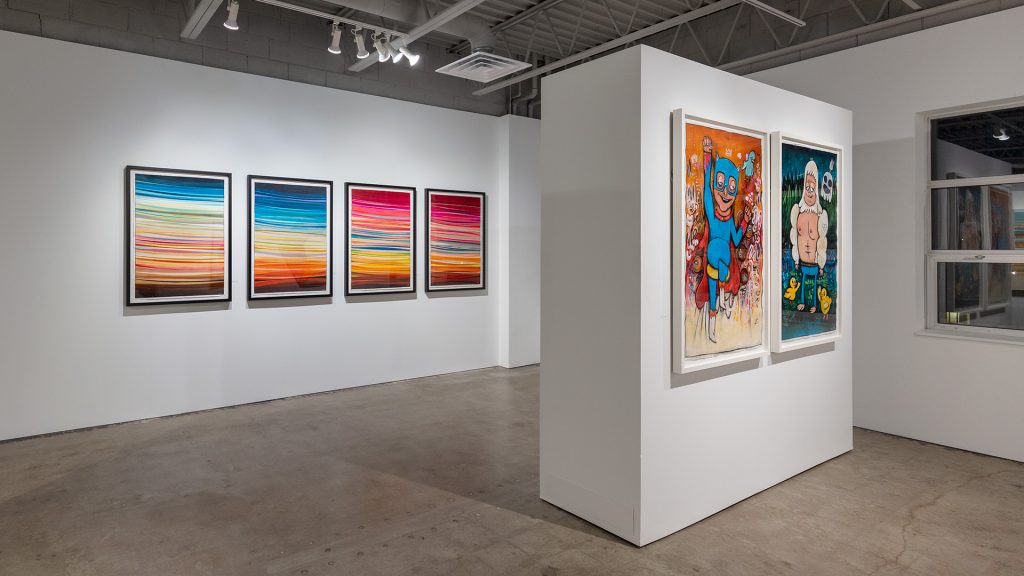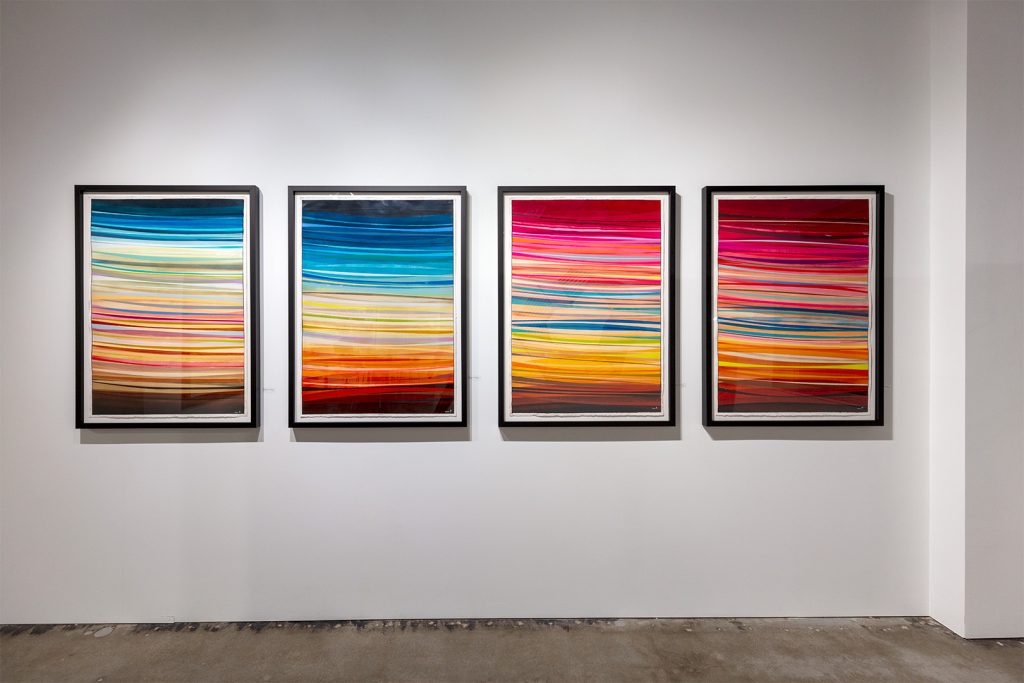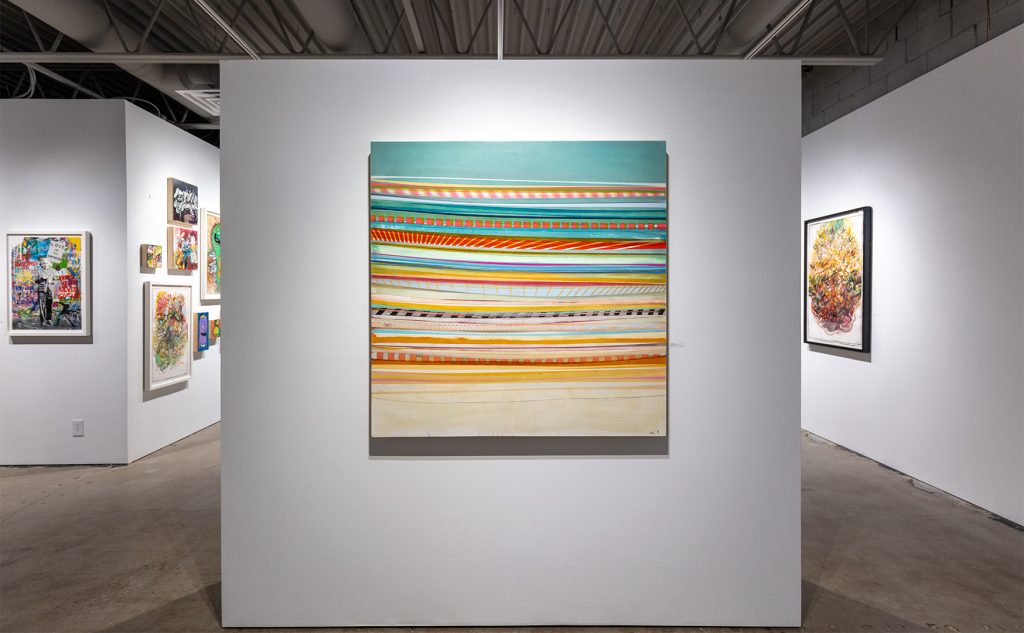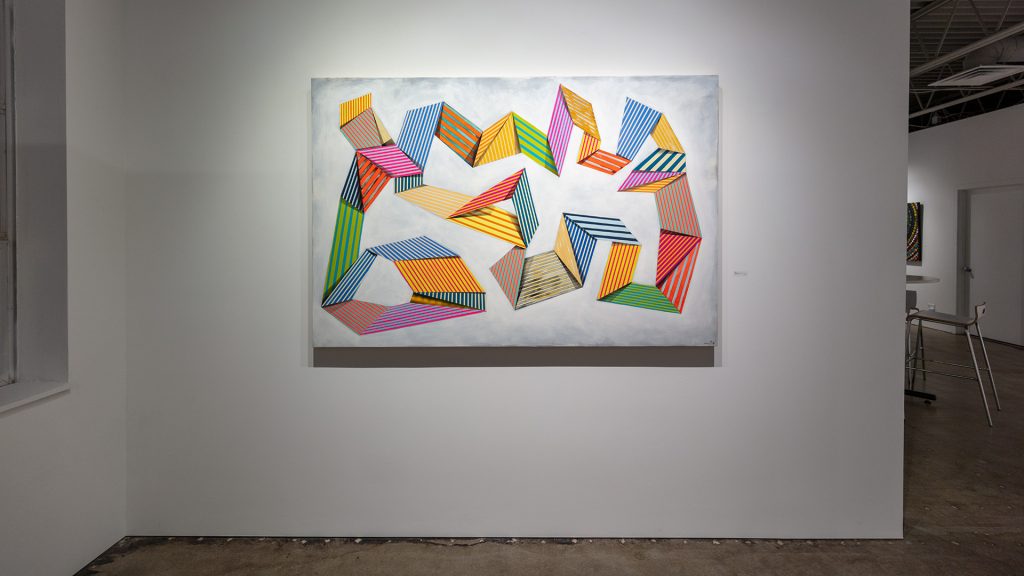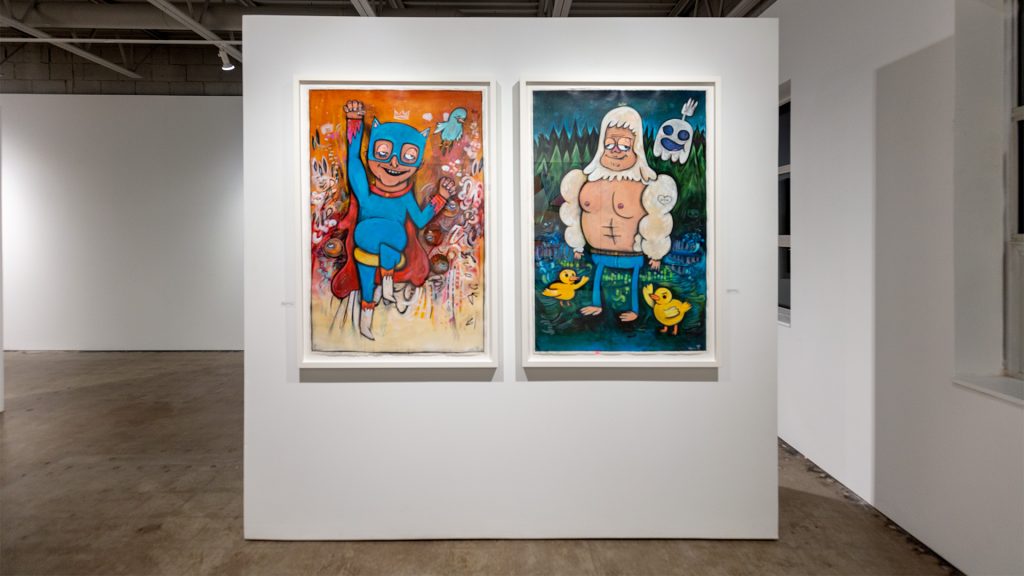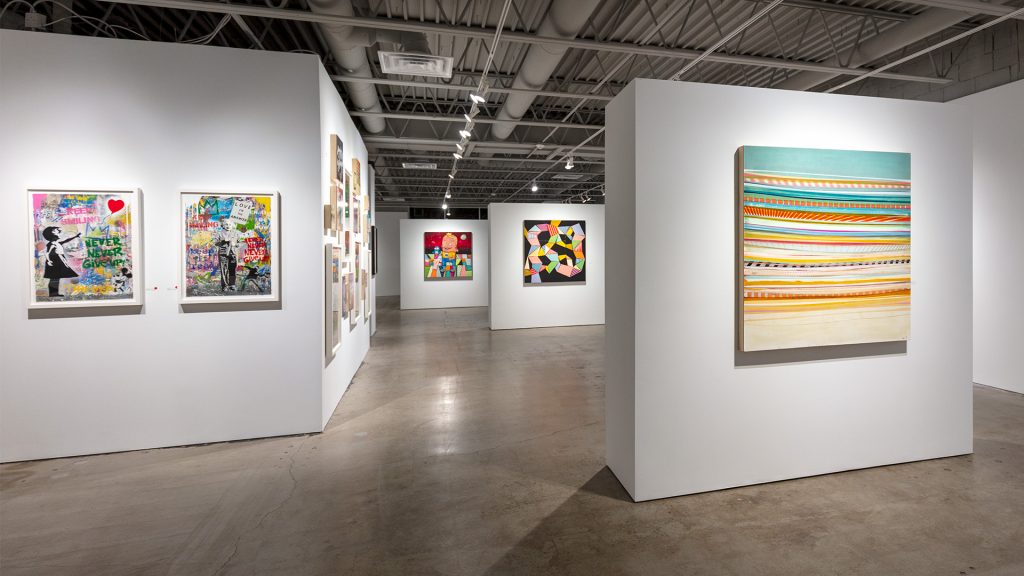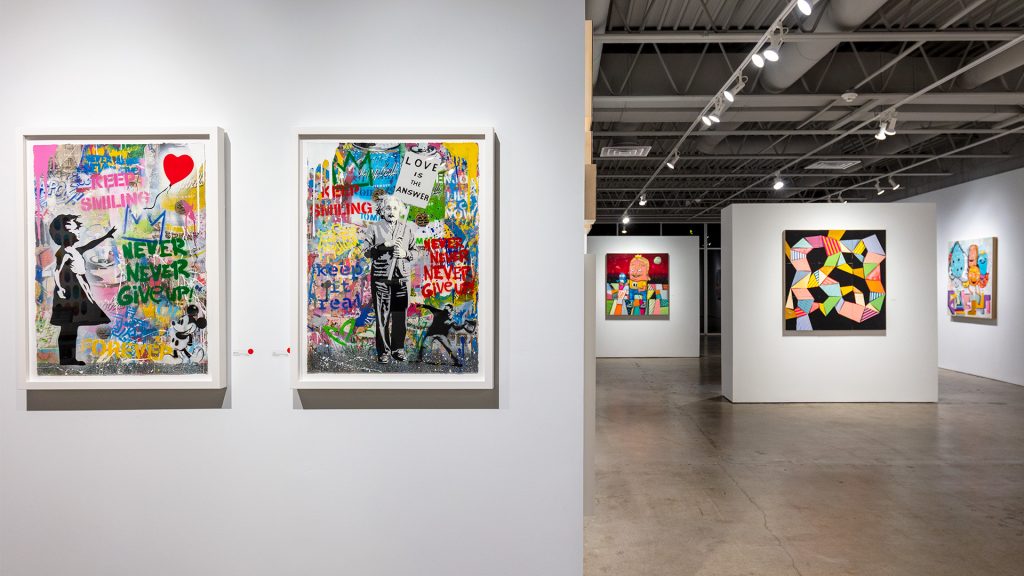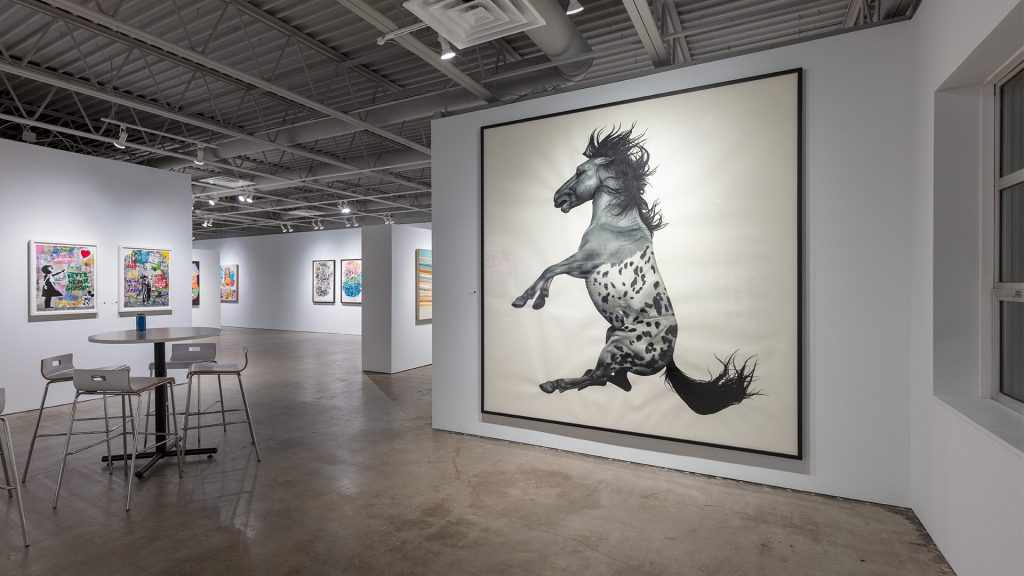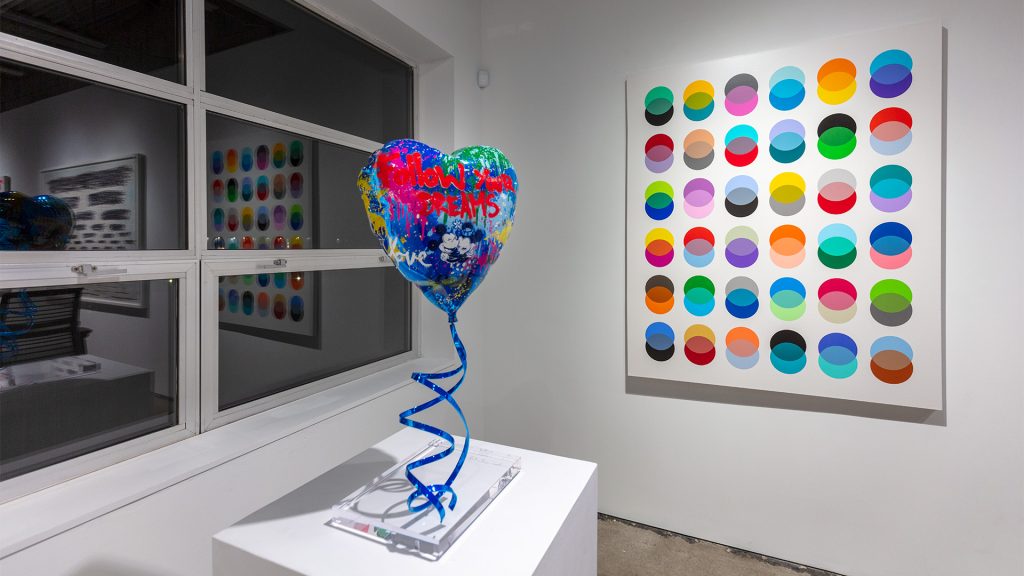TEXT BY MICHAELA MULLIN | VIEW IMAGES
Chris Vance just keeps on, and the world is a fuller and more thought and sought out place because of it. He continues to play, to push paint, to find collaborators and to hear musical shifts in volume and tempo, styles and tonalities. Everything Vance touches becomes colorized and contemporized. He is throwing curves; he’s breaking them, stacking them, and convening them—to amazing effect. His new exhibit, Moderate Restraint, shows his viewers just that. He’s been working with a focused intention to honor negative space, to allow it to be full of what’s left above, below, and around his congregation of segmented loops. The new panel and paper works take up new space by letting it go–offering central figures and lines their spatial due. Smaller lines and strokes make up this new, still voluptuous, body of work, some of which are father/son collaborations with emerging artist Colton Vance.
Just in time for spring, Vance has created Euclidian bouquets that need no water and last forever. These geometric floral paintings and mixed media works not only explode in true Vanceian fashion, but they bloom intelligently into the space of our eye and its line of sight, leading us to acknowledge relationships and how our life is about exchange, and change. He is about becoming and being and making better (if not bigger). It’s a great ethos to have as an artist, and even better as a parent. And much of what Vance has been making lately feels at the very least to peripherally touch upon a father/son relationship. And as with lines and pattern, Vance is also masterful at breaking archetypal dynamics.
Where normally there might be resistance within this duo, here the younger Vance is learning from and teaching his father, also. Colton Vance has been watching his father paint his whole life. Lately, he’s been sharing a studio with his father. And now, in this exhibit, they are finally showing together the two works on which they have collaborated: “Conversation Started” and “Scribbles, Legos, and the Creative Spirit.”
The former conjures an figurative spirit-like presence, as if it is woven up through the paint and not into but through thin air, to make a clear melding, or welding in white flames, the hottest part. This bonfire centers and heats the conversation. From all four corners of the painting, there are direct lines entering into what feels like a feminine center. The red that surrounds this conflagration begins to fade at the bottom, as if the bush of flames is riding upon water, making waves, understanding that things extinguish.
The latter is a playful hybrid of more distinct styles between artists. Here we find stripes, three-dimensional letters, hearts and hives, and the strangest familiar smiles. The background is palimpsestic, showing remainders, sketches, ghostly reminders that before there is something, one must cajole it out from nothing. The letters here do not spell anything, but they make us want to read them, make something of them. The three-eyed character leans down to take apart a piece of a piece of what might have been or could be a letter, just another form of strange character. The only thing that feels absolutely known lands in the lower right corner, as if we are at the end of a mysterious story, and we are exhilarated by the exclamation sign we can read! It’s a genius way to include the viewer and make satisfaction where there is intentional dissonance.
Vance’s characters are back, and aside from his collab with Colton, they are now flying solo. Rather than the parties of creatures we have grown to love, Vance now gives us individual portraits of his loving and mischievous imagination. “To Do” and “Saturdays” are prime examples of his animated whimsy and intelligent assessment of how animals (including humans) work (or don’t work). The sloth and the purple figure (in underwear) both smile as if they are dazed and confused, but happy in their lazy natures.
“Empty Nest” feels like a self-portrait. Dad with his crown and his can of beer, jeans rolled up, smiling through the tears, as his little bluebird fledges from his hand. It’s both goofy and poignant, which is Vance’s forte, of course.
In “Taking Flight,” Vance uses cumulative repetition, and with his loops of various sizes, makes speed and forward movement. A departure point touches the bottom left of the painting, and the loop span reaches left to right as it rises and enlarges. Looking closely into the cloud of whirls, there exist lines and dots like filaments and anthers from a flowers’ stamens.
“Open Doors” is a candy-colored journey through arched translucent shapes, connected to what appears like striped Jacob’s Ladder children’s toys. Moon shapes wax and wane, and panels becomes stairs, arches get rotated; in the composition’s whole, a building emerges, its roof, gabled. Surrounding the structure is white, with ghostly strokes, as if it/they are holding up the house of play.
The modular, mixed-media work, “Roll Bounce,” in many ways epitomizes Vance’s work in a sculptural way. If you spend time, you can make the puzzle panels “fit,” but there is always another hand, another way, to make beauty where things don’t quite match up, where lines diverge, and direction itself seems broken. The black background, with the multi-color stripes and white, make for tantalizing slides, around and over and back and up.
And Vance’s paper works, “Autumn Moon Lights My Way” and “Saturday in the Park” are loose bouquets of marks, with bows, tied and flopping, knotted and wandering. “Autumn” is a coalescent orb of floral and petal, and it seems to hover. “Saturday” is a little more tornadic, evoking the feeling of reading cartoons and coming upon a tussle between characters. Or maybe it’s the Fourth of July, a man selling ice cream, people laughing, people dancing, really smiling, a man playing guitar. Maybe it’s all these things spun like sugar in the mind and hand of Chris Vance. There is a black spiral core here, and from it, wondrous things emit. Don’t miss seeing them.
View and purchase work from this exhibit
Exhibit Images
